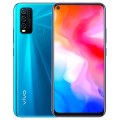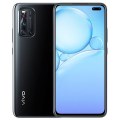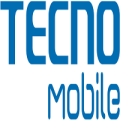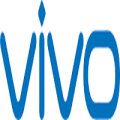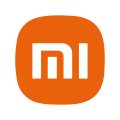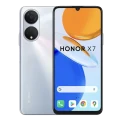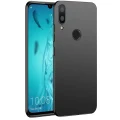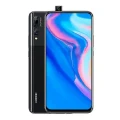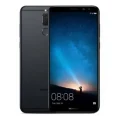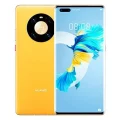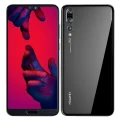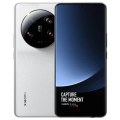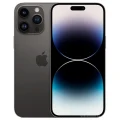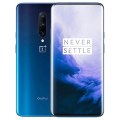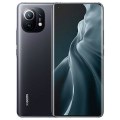- Awesome page
- Latest Mobile
- Smartphones
- Vivo X80 Pro
Vivo X80 Pro
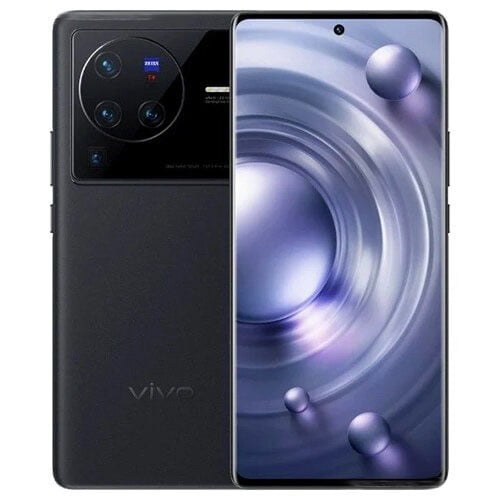


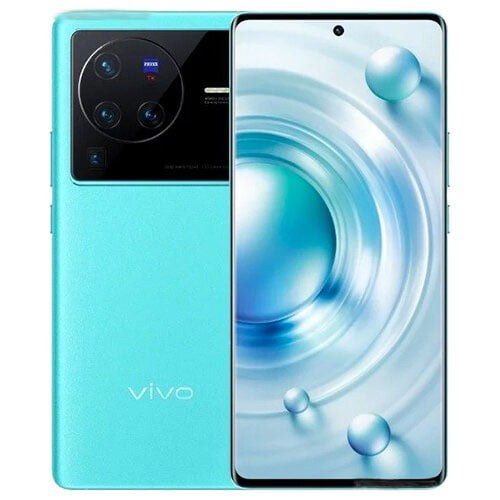
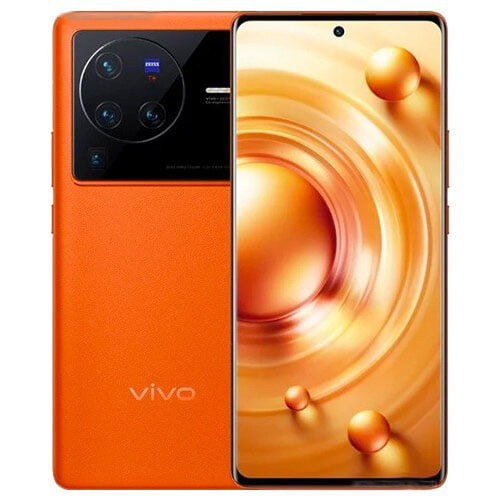
Vivo X80 Pro Price in Bangladesh
The price of the Vivo X80 Pro is Taka 80,000. It is available in two variants: 256GB with 8GB RAM and 512GB with 12GB RAM. The smartphone features a 4700mAh battery with 80W fast charging capability. Running on Android 12, it is powered by the MediaTek Dimensity 9000 (4 nm) chipset, ensuring high performance and efficiency.
Specifications
General
| Model | Vivo X80 Pro |
| Announced | 2022, April 25 |
| Released | 2022, April 29 |
| Status | Available |
| Official price | ৳80,000 |
Design
| Dimensions | 164.6 x 75.3 x 9.1 mm (6.48 x 2.96 x 0.36 in) |
| Weight | 215 g / 219 g (7.58 oz) |
| Colors |
Cosmic Black, Blue, Orange |
Network
| Technology | GSM / CDMA / HSPA / EVDO / LTE / 5G |
| 2G Network |
GSM 850 / 900 / 1800 / 1900 - SIM 1 & SIM 2 CDMA 800 / 1900 |
| 3G Network |
HSDPA 850 / 900 / 1700(AWS) / 1900 / 2100 CDMA2000 1xEV-DO |
| 4G Network |
1, 2, 3, 4, 5, 7, 8, 12, 13, 17, 18, 19, 20, 26, 28, 32, 38, 39, 40, 41, 42, 66 - International 1, 2, 3, 4, 5, 7, 8, 12, 17, 18, 19, 20, 25, 26, 28, 34, 38, 39, 40, 41, 42, 66 - China |
| 5G Network |
1, 2, 3, 5, 7, 8, 20, 28, 38, 40, 41, 66, 77, 78 SA/NSA - International 1, 3, 5, 7, 8, 12, 20, 28, 66, 38, 40, 41, 77, 78, 79 SA/NSA - China |
| GPRS <strong>GPRS</strong> (General Packet Radio Service) is a packet oriented mobile data service on the 2G and 3G cellular communication system's global system for mobile communications (GSM), Generally, GPRS is used for the purpose of wireless data transfer, such as sharing pictures and videos or browsing the Internet via a mobile phone connection. | |
| EDGE <strong>EDGE</strong> (Enhanced Data GSM Environment) is a wireless network technology generally considered the next step in the 2G network offers data transfer rates up to four times faster than ordinary GSM networks, Generally, EDGE is used for the purpose of wireless data transfer, such as sharing pictures and videos or browsing the Internet via a mobile phone connection. | |
| Speed | HSPA 42.2/5.76 Mbps, LTE-A, 5G |
Display
| Display Type <strong>Display Technology => </strong> A number of display technologies and types used in mobile phones => TFT (Thin Film Transistor), IPS (In-Place Switching), OLED (Organic Light Emitting Diode), AMOLED (Active-Matrix Organic Light-Emitting Diode), Super AMOLED (an even advanced version of AMOLED), Resistive Touchscreen (Resistive touchscreens contain two layer of conductive material with a very small gap between them which acts as a resistance), Capacitive Touchsceen (Capacitive touchscreen technology consists of a layer of glass coated with a transparent conductor) | LTPO3 AMOLED capacitive touchscreen, 1B colors |
| Size | 6.78 inches, 111.4 cm2 (~89.9% screen-to-body ratio) |
| Resolution | 1440 x 3200 pixels, 20:9 ratio (~517 ppi density) |
| Features |
120Hz, HDR10+, 1500 nits (peak) |
Camera
Main camera
| Camera Setup | Quad |
| Primary <strong>Camera</strong> is able to capture photographs and usually videos, The most important characteristics of a camera are the resolution (measured in megapixels), lens focus type (fixed or automatic), higher megapixel cameras are known to capture higher quality photos, but not always a good measurement of the photos quality. |
50 MP, f/1.6, (wide), 1/1.3&amp;quot;, PDAF, Laser AF, OIS 8 MP, f/3.4, (periscope telephoto), 1/4.4&amp;quot;, 1.0µm, PDAF, OIS, 5x optical zoom 12 MP, f/2.0, (telephoto), 1/2.0&amp;quot;, 1.22µm, PDAF, 2x optical zoom, gimbal OIS 48 MP, f/2.2, (ultrawide), 1/2.0&amp;quot;, AF |
| Features |
Zeiss optics, Zeiss T* lens coating, Pixel Shift, dual-LED dual-tone flash, HDR, panorama |
| Video | 8K@30fps, 4K@30/60fps, 1080p@30/60fps, gyro-EIS, HDR10+ |
Selfie camera
| Camera Setup | Single |
| Primary <strong>Camera</strong> is able to capture photographs and usually videos, The most important characteristics of a camera are the resolution (measured in megapixels), lens focus type (fixed or automatic), higher megapixel cameras are known to capture higher quality photos, but not always a good measurement of the photos quality. |
32 MP, f/2.5, 26mm (wide), 1/2.8&amp;quot;, 0.8µm |
| Features |
HDR |
| Video | 4K@30fps, 1080p@30fps |
Hardware
| Chipset <strong>Chipset</strong> is a group of integrated circuits designed to perform one or a more dedicated functions, often with real time computing constraints, Popular smartphones are equipped with more advanced embedded chipsets that can do many different tasks depending on their programming. | Qualcomm SM8450 Snapdragon 8 Gen 1 (4 nm) MediaTek Dimensity 9000 (4 nm) |
| CPU <strong>CPU</strong> (Central Processing Unit) mostly known as processors, CPU processes instructions in order to carry out certain functions that make your device operate properly. Processors are often described as the brain of computers, smartphones and tablets, Smartphones and tablets rely on processors to carry out their every task, Processors are an incredibly important factor in selecting any type of computing device, including your smartphone. | Octa-core (1x3.00 GHz Cortex-X2 & 3x2.40 GHz Cortex-A710 & 4x1.70 GHz Cortex-A510) Octa-core (1x2.8 GHz Cortex-A78 & 3x2.6 GHz Cortex-A78 & 4x2.0 GHz Cortex-A55) |
| GPU <strong>GPU</strong> (Graphics Processing Unit) is a single-chip processor designed to rapidly manipulate and alter memory to accelerate the creation of images in a frame buffer intended for output to a display, This includes things such as lighting effects, object transformations, and 3D motion. | Adreno 730 Mali-G78 MP10 |
| RAM (Memory) <strong>RAM</strong> (Random Access Memory) is a type of computer memory that can be accessed randomly, any byte of memory can be accessed without touching the preceding bytes that allows information to be stored and accessed quickly from random locations. RAM is the most common type of memory found in computer systems, smartphones, tablets and other electronic devices. | 8/12 GB |
| Internal Storage <strong>Internal Storage</strong> is a data storage space (flash memory) mostly used in smartphones, tablets and other electronic devices where operating system, apps, music, photos, videos, files and other user data Is stored. | 256/512 GB UFS 3.1 |
| Sensors <strong>Sensors</strong> are electronic components that detects and responds to some type of input from the physical environment. The specific input could be light, heat, motion, moisture, pressure and location, The output is generally a signal that is converted to use in computing systems, a location sensor, such as a GPS receiver is able to detect current location of your electronic device. |
Fingerprint (under display, ultrasonic), accelerometer, gyro, proximity, compass, color spectrum |
Connectivity
| Bluetooth <strong>Bluetooth</strong> is a wireless communications technology for exchanging data between mobile phones, headsets, computers and other network devices over short distances without wires, Bluetooth technology was primarily designed to support simple wireless networking of personal consumer devices. | 5.2 (Snapdragon)/ 5.3 (Dimensity), A2DP, LE, aptX HD |
| Infrared <strong>Infrared</strong> connectivity is an old wireless technology used to connect two electronic devices. It uses a beam of infrared light to transmit information and so requires direct line of sight and operates only at close range. | |
| USB | USB Type-C 2.0, USB On-The-Go |
| GPS <strong>GPS</strong> The Global Positioning System is a satellite-based radio navigation system, GPS permits users to determine their position, velocity and the time 24 hours a day, in all weather, anywhere in the world, In order to locate your position, your device or GPS receiver must have a clear view of the sky. | Yes, with dual-band A-GPS, GLONASS, BDS, GALILEO, QZSS, NavIC |
| NFC <strong>NFC</strong> (Near field communication) is a set of standards for smartphones and similar devices to establish peer-to-peer radio communications with each other by touching them together or bringing them into proximity, usually no more than a few inches. |
Battery
| Battery Type <strong>Battery Type => </strong> Cell phones run on various kinds of batteries depending on the manufacturer, phone size or shape and features. There are basically four types of cell phone batteries => Lithium Polymer, Lithium Ion, Nickel Metal Hydride and Nickel Cadmium. | Non-Removable Li-Po |
| Capacity <strong>Battery Capacity</strong> is a measure (typically in Amp-hr) of the charge stored by the battery, and is determined by the mass of active material contained in the battery. The battery capacity represents the maximum amount of energy that can be extracted from the battery under certain conditions. | 4700 mAh |
| Charging Charging | Fast charging 80W, 100% in 38 min (advertised) Fast wireless charging 50W, 100% in 50 min (advertised) Reverse charging |
The Vivo X80 Pro Review You Need to Read Before Your Next Upgrade
Introduction to the Vivo X80 Pro
In an era where technology is constantly evolving, staying updated with the latest gadgets can be exhilarating yet overwhelming. If you’re a tech enthusiast, a smartphone user, or just someone who loves the thrill of new gadgets, the Vivo X80 Pro is a name that’s been buzzing in the tech world. This blog post aims to provide you with an in-depth review of the Vivo X80 Pro, covering everything from its specifications and design to its performance and value.
The Vivo X80 Pro is designed to cater to users who crave a blend of style, performance, and cutting-edge technology. Whether you’re a photography aficionado, a gamer, or someone who needs a reliable all-rounder, this phone promises to deliver. Here, we’ll break down each aspect of the phone, so you know exactly what to expect.
Unboxing Experience
One of the first things that set the tone for any new gadget is the unboxing experience. The Vivo X80 Pro does not disappoint in this regard. The packaging is sleek and sophisticated, reflecting the high-end nature of the device. Upon opening the box, you’re greeted with the phone itself, nestled securely in a foam insert.
Beneath the phone, you’ll find all the essential accessories. This includes a fast charger, a USB-C cable, earphones, and a protective case. Each item is neatly arranged, making the unboxing experience feel luxurious and well-thought-out. First impressions are crucial, and the Vivo X80 Pro sets a high bar right from the start.
Aside from the physical accessories, the documentation included is comprehensive. It offers a quick start guide, warranty information, and a few tips to get the most out of your new device. Overall, the unboxing experience gives you a sense of the premium quality that Vivo aims to deliver.
Performance Review
When it comes to performance, the Vivo X80 Pro stands tall among its competitors. The phone is powered by the latest Snapdragon 8 Gen 1 processor, ensuring that it can handle anything you throw at it. Whether you’re multitasking, streaming videos, or playing graphics-intensive games, the Vivo X80 Pro performs seamlessly.
Battery life is another critical aspect, and the X80 Pro excels here too. With a 4500mAh battery, this phone easily lasts through a full day of heavy usage. And when it’s time to recharge, the fast-charging capabilities mean you’re back up and running in no time.
Gaming on the Vivo X80 Pro is a dream. The combination of its powerful processor, ample RAM, and high refresh rate display makes for an immersive gaming experience. There’s no lag, and the phone stays cool even during extended gaming sessions. If you’re a gamer, this phone is more than capable of meeting your needs.
Camera Quality
One of the standout features of the Vivo X80 Pro is its camera system. Equipped with a quad-camera setup, including a 50MP main sensor, this phone is designed for photography enthusiasts. The camera captures stunning detail and vibrant colors, whether you’re shooting in daylight or low light conditions.
Sample photos taken with the Vivo X80 Pro showcase its impressive capabilities. From landscape shots to close-up portraits, the images are sharp and well-balanced. The night mode is particularly noteworthy, as it manages to capture clear and bright photos even in near-dark conditions.
Video quality is equally impressive. The phone supports 8K video recording, and the stabilization features ensure that your videos are smooth and professional-looking. Whether you’re documenting your travels or creating content for social media, the Vivo X80 Pro’s camera system has got you covered.
User Interface and Special Features
The user interface of the Vivo X80 Pro is intuitive and user-friendly. Running on Vivo’s custom FunTouch OS, which is based on Android 12, the phone offers a smooth and responsive experience. The layout is clean, and navigating through the menus is a breeze.
Special features like the in-display fingerprint scanner and face unlock add to the overall user experience. These security features are quick and reliable, giving you peace of mind that your data is secure. Additionally, the phone comes with a range of customization options, allowing you to tailor the interface to your liking.
Another unique feature is the Vivo X80 Pro’s support for 5G connectivity. This ensures that you’re future-proofed and can take advantage of faster internet speeds as they become available. The phone also includes various AI-driven features, such as smart photo editing and voice assistants, enhancing its functionality.
Price and Value
When considering a new smartphone, price and value are always crucial factors. The Vivo X80 Pro is positioned in the premium segment, with a price tag to match. However, the features and performance it offers justify the cost.
Compared to other flagship phones in the market, the Vivo X80 Pro holds its own. It offers a compelling mix of high-end specifications, camera capabilities, and unique features that make it a worthy contender. For those who prioritize quality and performance, this phone provides excellent value for money.
Ultimately, the decision comes down to your specific needs and budget. If you’re looking for a top-tier smartphone that excels in multiple areas, the Vivo X80 Pro is a fantastic choice. It offers a premium experience that’s hard to beat.
Conclusion
In conclusion, the Vivo X80 Pro is a smartphone that delivers on its promises. From its impressive performance and camera quality to its user-friendly interface and special features, this phone has something for everyone. Whether you’re a tech enthusiast, a mobile gamer, or someone who loves capturing memories, the Vivo X80 Pro is designed to meet your needs.
We hope this review has provided you with valuable insights into what the Vivo X80 Pro has to offer. If you’re considering an upgrade, this phone is definitely worth checking out. Share your thoughts or experiences with the Vivo X80 Pro in the comments below. We’d love to hear from you.
